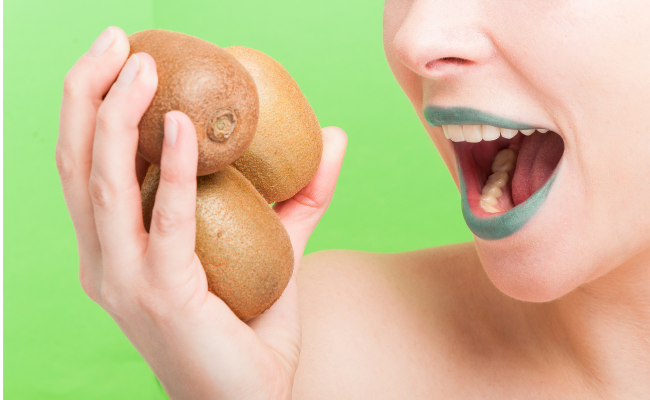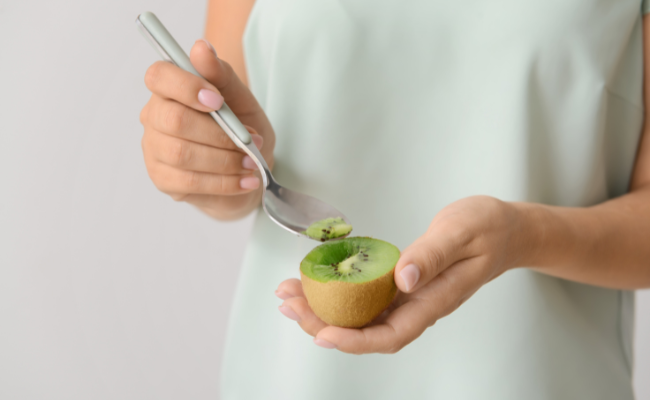Can You Eat Kiwi Skin? What You Need to Know
Kiwifruit, or just kiwi for short, is a very nutritious fruit with a lot of vitamin C and fiber.
With a perfect blend of sweet flavor and tart, brown fuzzy skin, gorgeous green flesh, a tender white core, and tiny black seeds, what’s not to love about the kiwi fruit?
The customary way to eat kiwi is to cut it open, dig out the fruit with a spoon and dispose of the skin. However, the skin of kiwi is edible and has led to the controversy of whether it is ok to eat the skin of kiwi or not.
I encourage you to keep reading this article as we discuss the pros, the cons, and all there is to know about eating kiwi skin.
Is Kiwi Skin Edible?
The brown and fuzzy texture of the skin might discourage you at first, but it is very similar to the skin of a pear.
The kiwi fruit skin is very nutritious and contains high fiber, vitamin E, and folate levels. These are essential body nutrients, and here is why:
- Fiber: is responsible for feeding the good bacteria in your stomach. A diet high in fiber will help reduce the possibility of diabetes, heart disease, and cancer.
- Vitamin E: is a fat-soluble compound with robust antioxidant properties. It helps ensure your cells stay healthy by preventing damage from free radicals.
- Folate: is a crucial nutrient that aids cell growth and division. It also helps in preventing neural tube defects in pregnant women.
Unlike consuming the flesh of kiwis alone, you can increase your fiber content by 50%, boost folate up to 32% and increase vitamin E concentration to 34% by also eating the skin.
Because most of our daily meals do not have enough fiber, folate, or vitamin E, an effortless way to include them in your diet is by eating the skin of the kiwi fruit.
How to Eat Kiwi Skin
The nutrients you will find in the skin of kiwi are enormous, but still, many people find it unappealing to eat because the skin has this fuzzy texture and a weird taste.
Nevertheless, if you want to eat the skin of the kiwi, you can remove the fuzz to an extent. You must get a clean towel and rub on the fruit, scrub with a vegetable brush, or scrape with a spoon.
This will also ensure that the fruit’s skin is dirt free and ready to be eaten. To help remove more residue, you can soak the fruit in a mixture of baking soda and water. This is more effective than using water alone.
Benefits of Eating Kiwi Skin
There are several health benefits associated with eating the skin of kiwi – some of which are;
Prevents heart disease: the presence of flavonoids in the skin of kiwi helps protect the body cells. Studies have revealed that eating these antioxidants can reduce the risk of heart disease.
Prevents constipation and colon cancer: the kiwi skin is the primary source of fiber compared to the flesh. High quantities of soluble fiber found in kiwi skin helps stimulate the intestines to improve digestion and prevent constipation.
Improves Immunity: the abundance of vitamin C and Vitamin E in kiwi skin helps boost the immune system.
Improves cell growth: folate is present in the skin of kiwi and is responsible for the formation of nerve cells and red blood cells. This is very beneficial to pregnant women.
Reduces blood pressure: studies have revealed that eating the skin and fruit of kiwi together can reduce blood pressure in adults.
Despite all these health benefits of eating kiwi skin, not everyone should eat kiwis or the skin like those with allergies.
Kiwi skin contains actinidin, and if taken in large quantities, it can cause diarrhea and vomiting. Some may experience oral allergies like; itchy mouth, swollen lips, and sore throat.
And this happens when the immune system reacts to some of the protein compounds found in kiwi. People with such allergies need to avoid eating kiwi skin.
Furthermore, people with a medical history of calcium oxalate kidney stones must avoid eating the skin of kiwi. This is because the skin contains higher levels of oxalate than the inner flesh of the fruit.
Conclusion
Kiwi is an excellent fruit to include in your diet. You can use them in smoothies and salsas. Not everyone will enjoy munching on the skin of kiwi, but it is edible and safe to eat.
You should try it. It is even more nutritious to eat kiwi together with the kiwi skin. However, you should consider the cons of eating kiwi skin.
If you have a sensitive mouth, are allergic to kiwi, or have a history of kidney stones, we strongly advise you not to eat the fruit or its outer layer.
If you have zero reaction to the fruit or its skin, you will gain many nutritional benefits from eating this fruit.



